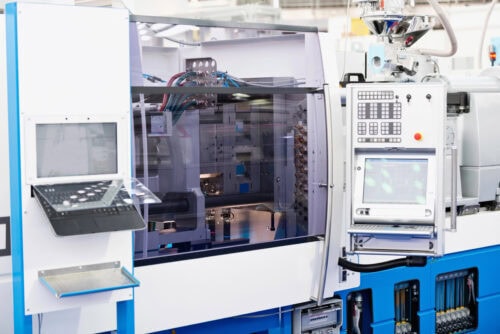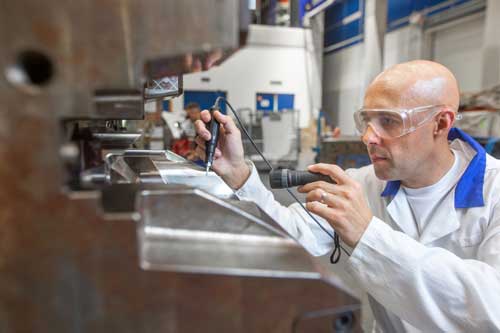Injection Molding Best Practices
Comments Off on Injection Molding Best Practices
Injection molding is one of the most versatile and cost-effective manufacturing processes for producing high-quality plastic parts. But in order to get great results, you’ll need to follow injection molding best practices. This means paying close attention to every step throughout the process. Following these guidelines can help you maximize component quality and efficiency, while reducing costs to remain competitive.
Start with a Great Part Design
As we discussed in our last blog, before you can even think about tooling, you’ll need to start with a great part design. This initially requires a clear understanding of the part’s functional requirements. Pay close attention to the environment where the component will function as well. This will help drive design and material selection decisions. (More on that in a bit.)
Successful part design must take close consideration of the injection molding process itself. It’s wise to engage manufacturing engineers early in the process, as they can help identify potential pitfalls before they become costly mistakes. Considerations such as how the part will be oriented within the mold, where the part line will fall will affect functionality and aesthetics.
And don’t forget about another favorite topic of ours: design for manufacturability. This aspect reached beyond functionality and aesthetics and includes factors including wall thickness and draft angles. These will impact cost, quality, delivery and other factors.
Try It Before You Buy it
Before you invest in tooling, it’s wise to take advantage of mold simulation technology. This allows you to validate your part and mold designs. Mold flow analysis software will allow you to test how the molten plastic will fill the cavity. Doing so will help identify potential issues such as weld lines, air traps, short shots, and warpage. This predictive approach can save you thousands in tooling modification costs while reducing time-to-market significantly. The investment in simulation typically pays for itself many times over by preventing expensive mistakes and costly waste, while getting the finished goods to market quicker.
Of course, always consider prototyping your parts before you make them. 3D printing, along with other additive techniques, are a great way to test out a part before committing to tooling.
The Importance of Mold Design
We can’t stress this enough: the foundation of successful injection molding lies in exceptional mold design. If you get your mold design and manufacturing right, it will pay dividends across the component’s lifecycle. In addition to these mold design considerations, be mindful of factors including gate placement, adequate venting, and cooling channel placement for consistent cycle times and dimensional stability.
A few final thoughts on molds: consider the steel grade carefully. While premium tool steel does cost more upfront, it will pay off over time by delivering excellent surface finishes, longer tool life, and reduced maintenance. Try to incorporate easy-access maintenance features into your mold where feasible. Quick-change capabilities and modular components will reduce downtime during routine maintenance or inevitable design modifications.
Use Automation and Other Advanced Molding Techniques
Injection molding these days relies on automation to help improve consistency, reduce labor costs, and enhance safety. Robotic part handling systems can operate continuously with precise repeatability, while automated quality inspection systems catch defects before they reach customers.
For high-volume applications, multi-cavity molds can dramatically reduce per-part costs despite higher initial tooling investments. Family molds, which can produce multiple different parts in a single shot, can help optimize production scheduling for lower-volume components. Don’t forget about hot runner systems, which eliminate material waste from runners and gates in addition to reducing cycle times.
Also consider implementing real-time process monitoring systems that will help track key parameters like injection pressure, melt temperature, and cycle time. These systems can detect process variations early, enabling you to make adjustments before quality issues, and related headaches arise.
Additional Injection Molding Best Practices Considerations
 Process validation and documentation – establish processing windows through designed experiments rather than relying on trial-and-error approaches. Document validated parameters thoroughly and implement controls to maintain consistency across different operators and shifts.
Process validation and documentation – establish processing windows through designed experiments rather than relying on trial-and-error approaches. Document validated parameters thoroughly and implement controls to maintain consistency across different operators and shifts.- Quality Control and Inspection – it’s critical to have a good quality program in place that covers the entire process, but particularly part manufacturing. Approaches such as first article inspection, in-process monitoring, and statistical sampling and measurement are just a few of your options. Consider CMM and in-line machine vision inspections for your most demanding parts.
- Scrap and Regrinding Management – while it’s important to make quality parts that are made to last, today’s best practices call for tracking scrap rates, using recycled material, and reducing waste to leave a lower carbon footprint.
- Color Consistency and Masterbatch management – this can be a tricky one, especially for parts with multiple runs over longer periods of time. Keep reference samples on hand for each run, and be sure to run tight processes to maintain color consistency.
- Proper Mold Storage and Handling – this is critical for long-term success. Keeping your molds preserved means they need to be stored in a climate and humidity controlled environment, and is well packaged and protected.
- Preventive Maintenance – you can also help reduce downtime and maintain quality by giving those molds some extra love and attention. Regular cleaning, inspection, and component replacement will go a long way! Set up routine maintenance schedules and keep detailed records of the mold’s history and performance.
- Maintain Beneficial Partnerships – with trusted and experienced injection molding shops. They will provide technical expertise and guidance to buyers throughout the design and production process.
Simply put: by following these injection molding best practices that we shared with you today, you’ll achieve more predictable outcomes, and provide plastic components and assemblies that will meet and often exceed your expectations consistently.
Have a question about best practices for injection molding?
Reach out to us – we’re always happy to help customers optimize processes and profits!
